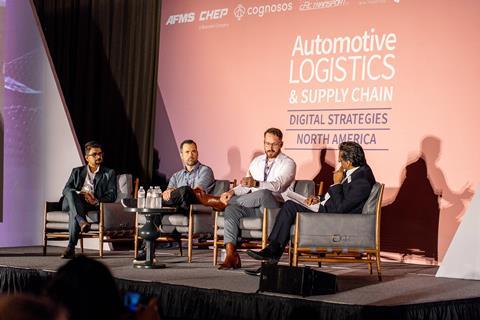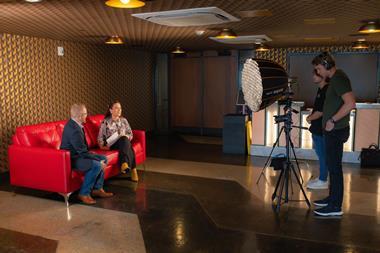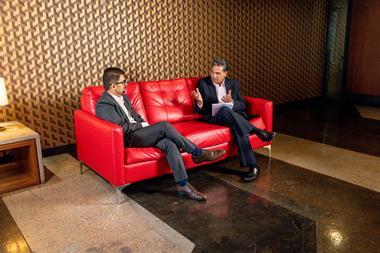The demand for digital technology to manage risk and build in resiliency to the automotive supply chain has accelerated since the disruption caused by the Covid pandemic and the consequent semiconductor shortage. That technological adoption is also driving organisational change at the carmakers and tier suppliers, according to speakers at this year’s Automotive Logistics and Supply Chain Digital Strategies North America conference in Nashville, Tennessee.

Logen Lytle, supply chain operations technology lead at Honda Development and Manufacturing, said the company has undergone a massive structural reorganisation of supply chain operations across the North American region, establishing a core nucleus and a one team approach, and developing standardised processes and operational responsibilities.
“We defined what wanted from the organisation and we knew we had to get to that point to get interoperability,” said Lytle. “Our associates had to evolve with that.”
Lytle said Honda has established teams for data analytics, technological development and innovation and housed them all under a regional team with specific communication channels and a support structure that manages the operations, including for indirect associates, at each operational site.
“We are establishing that ‘one way, best way’ approach and we take a lot of pride in making sure we don’t have to chase every single fire because someone did something different,” said Lytle.
A roadmap for everyone
What is important in that organisational change is alignment among the parties affected. Alex Murray, senior manager of global supply chain management in the Metal Forming division of American Axle & Manufacturing, said it was important to get everyone on the same page and create a roadmap that everyone can follow.
“If you don’t do that with successful input from everyone, you struggle and it becomes a siloed approach,” he said. “The users that are dealing with the aftermath can be frustrated because it seems to be change that didn’t help them even though potentially it made leadership happy. They end up confused as to why it didn’t go as expected.”
To avoid the risk of replacing one silo for another, Murray said the teams at AAM are working to the same KPIs and everyone has to have skin in the game when it comes to the solution that is being delivered.
“It has to align so there is ownership and everybody understands the importance of what should be worked on and why they are working on it,” he said. “They need to understand the priority it has within the company and the strategic long-term plan. That is extremely important.”
Without that teams can be working on solutions that only fit their own needs and not those of the overall organisation.
“Logistics and supply chain teams may be looking for ways to drive down cost that are different to the IT organisation, then don’t get the full picture,” said Murray.
Chandan Trehan, digital supply chains and logistics lead at Bosch North America, agreed that having a shared definition of organisational change that everyone agreed with was crucial for its success.
Watch: Chandan Trehan on the Red Sofa
“When we are creating that change model it is important to make sure that we are communicating the ‘why’ part of the change more than the how and what part of the it,” he said. Without explaining why a change is happening risks the employees only getting an exercise in compliance rather than feeling they are part of the change, explained Trehan.
Trehan said that a second important aspect in organisational change is maintaining constant communication, with a clearly defined process and roadmap. That helps to time the steps of the change process properly and avoid burnout where effort is not aligned with impact on the ground and employees become disillusioned.
Read more coverage of ALSC Digital Strategies North America in our recap blog
Mindset for change
Trehan also noted that the uptake of new digital technology required a mindset that was not fixated on the particular software tool being applied.
“It is about having a mindset that says ‘I am doing a particular job and I need to see what is a better way of doing this’. The problem is only incidental. If everyone starts thinking with that mindset, it brings a lot of change,” he said.
It is important to remember that there is no one size fits all and people will have different ideologies when it comes to change management, added Trehan,
As part of the communication channel that ensures alignment it is critical to have continuous feedback mechanism, said Trehan.
“I often say that a feedback mechanism is not just for good things,” he said. “When you are asking people for feedback you need to listen to them, understand what they mean and where they are coming from, so that you can make actual improvements. People need to be heard.”
He added that stifling employees when they express how they feel about the change and the transformation of the organisation can become counterproductive and detrimental.
Murray agreed that feedback from users and developers was essential to gaining acceptance for change across an organisation. He said it was extremely important to get feedback from a logistics professional or a manufacturing lead about the type of tool they are looking for, what their main concerns and interests are, and then morph the tool to support those observations.
“If you build that level of trust, through feedback and conversation, you start to get the thoughts of everyone else,” said Murray. “That is where innovation can come into play, when you have 5-10 people in a room willing to talk freely about ideas and topics and you can really move it forward. That is the most important step. Create the buy-in and get a solid innovative solution.”

























![Global[1]](https://d3n5uof8vony13.cloudfront.net/Pictures/web/a/d/s/global1_726550.svgz)













No comments yet